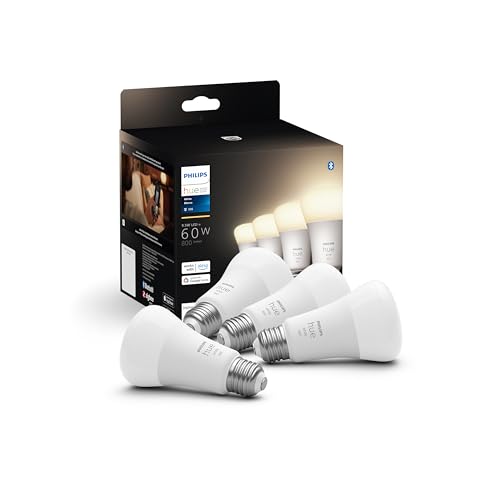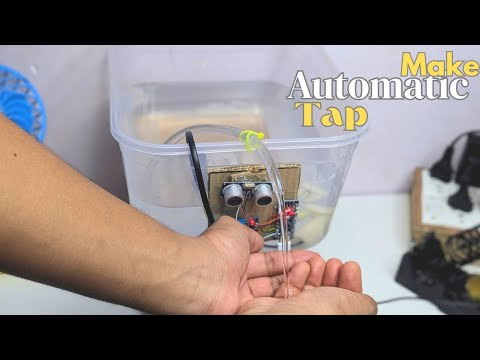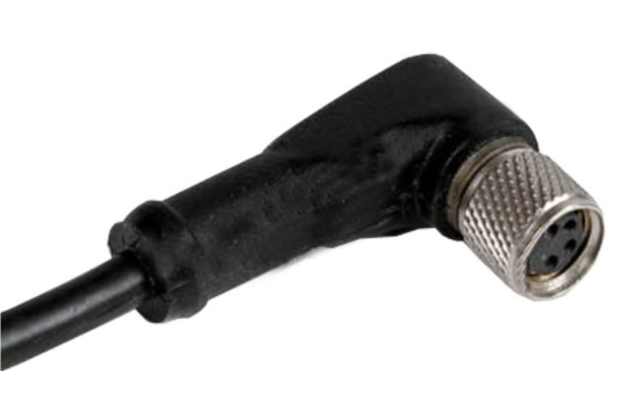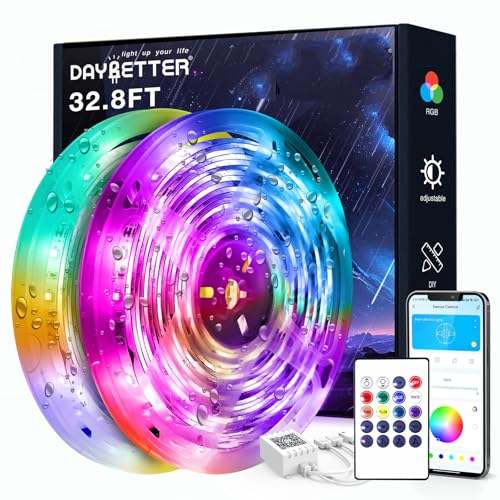Imagine opening your kitchen cabinets and instantly seeing everything inside clearly, without fumbling or turning on bright overhead lights. With DIY smart cabinet lighting, you can make this convenience a reality—right in your own home.
Whether you want to add a modern touch, save energy, or simply make your space more functional, smart lighting is an easy upgrade you can handle yourself. Ready to transform your cabinets and experience the perfect glow every time you open them?
Keep reading to discover how simple and rewarding this project can be for you.
:max_bytes(150000):strip_icc()/spr-myplus-under-cabinet-lights-carina-skelton-10-17b14c58a00a4b76b0d9b4e106ad997c.jpeg)
Credit: www.thespruce.com
Choosing The Right Lights
Good lighting makes your cabinet look better and helps you find things easily. Choosing the right lights can change how your space feels.
There are many options for cabinet lighting. Learn about types, bulbs, and brightness to pick the best one.
Types Of Cabinet Lights
Cabinet lights come in different styles. You can use strip lights, puck lights, or tape lights. Each type fits different spaces and needs.
Strip lights are long and slim. Puck lights are round and small. Tape lights are flexible and easy to hide.
- Strip Lights: Great for long shelves
- Puck Lights: Perfect for small spots
- Tape Lights: Good for curves and corners
Led Vs. Traditional Bulbs
LED lights use less energy and last longer than traditional bulbs. They stay cool and are safer for cabinets.
Traditional bulbs get hot and use more power. They may need more frequent replacement. LEDs are a better choice for most cabinet lighting.
- LED: Energy-saving, long-lasting, cool to touch
- Traditional: Uses more power, gets hot, shorter life
Brightness And Color Temperature
Brightness is how much light the bulbs give off. Choose brightness based on how you use your cabinets.
Color temperature affects the mood. Warm light feels cozy. Cool light looks bright and clear. Pick what fits your style and needs.
| Color Temperature | Look | Use |
|---|---|---|
| 2700K – 3000K | Warm, yellowish | Cozy feel, good for kitchens |
| 3500K – 4100K | Neutral, white | Balanced, good for work areas |
| 5000K – 6500K | Cool, bluish | Bright, clear, best for detail work |

Credit: www.amazon.ca
Tools And Materials Needed
Installing smart lighting in your cabinet can improve visibility and style. You need the right tools and materials to do this project well.
This guide covers the essential tools, recommended materials, and safety gear for your DIY smart cabinet lighting.
Essential Tools
You will need some basic tools to install smart lighting safely and neatly. These tools help you measure, cut, and connect parts.
- Measuring tape to get exact lengths
- Screwdriver for fixing mounts
- Wire stripper for electrical connections
- Drill to make holes for screws
- Hot glue gun or double-sided tape for mounting lights
- Level to keep lights straight
Recommended Materials
Choosing the right materials makes your lighting work well and last longer. Use quality products for the best results.
- LED light strips with smart control features
- Power supply adapter suitable for LED strips
- Extension cables to reach power sources
- Connectors and splitters for wiring
- Mounting clips or adhesive backing for easy installation
- Smart switch or remote control for convenience
Safety Gear
Safety is important when working with electrical parts. Wear gear that protects your hands and eyes.
- Insulated gloves to avoid electric shocks
- Safety glasses to protect your eyes
- Dust mask if drilling creates dust
- Non-slip shoes to prevent falls
Planning Your Lighting Layout
Good lighting makes your cabinets look better and helps you find things easily. Planning your layout first saves time and money.
Think about where to put lights before you start. This helps you get even light and avoid dark spots.
Measuring Your Cabinets
Measure the width, height, and depth of your cabinets. Write down these numbers to plan light sizes and placement.
Check inside shelves and doors. This helps to know where to add lights for the best effect.
- Measure cabinet width from side to side
- Measure height from top to bottom
- Measure depth from front to back
- Note shelf sizes and spacing
Determining Light Placement
Place lights where you need the most light. Common spots are under shelves and inside the cabinet.
Think about areas that get dark or hard to see. Add lights there to improve visibility.
- Under cabinet edges for counter lighting
- Inside cabinet tops for shelf lighting
- Along cabinet sides for extra brightness
- Avoid placing lights where shadows form
Power Source Options
Choose how to power your lights. You can use batteries, plug-in adapters, or connect to home wiring.
Each option has pros and cons. Pick one that fits your cabinet setup and skills.
- Batteries: easy to install, no wires needed
- Plug-in adapters: need nearby outlets
- Hardwired: clean look, needs electrical work

Credit: www.reddit.com
Step-by-step Installation
Installing smart lighting in your cabinet can improve visibility and style. This guide helps you add smart lights easily.
Follow clear steps to prepare, mount, and connect your smart cabinet lights. No special tools or skills needed.
Preparing The Surface
Clean the cabinet surface where you want to install the lights. Use a dry cloth to remove dust and dirt.
Make sure the surface is smooth and dry. This helps the lights stick well and last longer.
- Remove any stickers or old tape
- Wipe with rubbing alcohol if needed
- Let the surface dry completely
Mounting The Lights
Choose the right place inside the cabinet to mount the lights. Avoid spots that block doors or shelves.
Use the adhesive tape or screws that come with the lights to fix them. Press firmly to secure the lights.
- Test the light position before fixing
- Use a level to keep lights straight
- Press tape or screws tightly for a strong hold
Wiring And Connections
Connect the lights to the power source following the instructions. Make sure wires are not loose or tangled.
Use wire clips or tape to keep wires neat. Check if the lights turn on before closing the cabinet.
- Turn off power before wiring
- Match wire colors correctly
- Secure wires with clips or tape
- Test the lights after connection
Smart Controls And Automation
DIY smart cabinet lighting adds convenience and style to your home. Smart controls help you manage lighting easily.
Automation lets lights turn on or off without manual effort. It makes your cabinets brighter when you need them.
Choosing A Smart Hub
A smart hub connects your lighting to other devices. It acts as the control center for your smart cabinet lights.
Pick a hub that works with your lights and other home gadgets. Make sure it supports the apps you want to use.
- Check compatibility with your lighting system
- Look for hubs that support popular smart apps
- Choose hubs with easy setup and good support
Integrating Voice Control
Voice control lets you use your voice to switch cabinet lights on or off. It works with devices like Alexa or Google Assistant.
Set up voice commands to control brightness or colors. This makes lighting control hands-free and simple.
- Enable voice assistant apps on your phone
- Link your smart lighting to the voice assistant
- Create simple commands like “Turn on cabinet lights”
Setting Up Schedules And Sensors
Schedules help your lights turn on and off at set times. Sensors can detect when you open a cabinet and light it up.
Use schedules for daily routines and sensors for quick lighting. This saves energy and adds comfort.
- Create daily on/off times with your smart app
- Use motion or door sensors for automatic lighting
- Adjust sensor sensitivity for best performance
Troubleshooting Common Issues
DIY smart cabinet lighting can add style and function to your space. Sometimes, these lights may have problems.
This guide covers common issues and how to fix them easily.
Flickering Lights
Flickering happens when the light turns on and off quickly. This can be annoying and reduce light quality.
Loose connections or poor wiring often cause flickering. Also, low-quality bulbs may flicker more.
- Check if all wires are tight and secure
- Use bulbs recommended for your smart lighting system
- Replace bulbs if flickering continues
Connectivity Problems
Smart cabinet lights need a good connection to work well. Weak signals can cause delays or failure to control lights.
Wi-Fi or Bluetooth issues often block communication between your device and lights.
- Move your router closer to the cabinet
- Restart your smart home hub or app
- Check if your device supports the light’s connection type
- Reset the lights and reconnect them
Power Supply Challenges
Lights need a steady power supply to work. Power issues can cause lights to turn off or not light at all.
Problems include loose plugs, faulty adapters, or insufficient power sources.
- Check if the power adapter is plugged in correctly
- Try a different power outlet
- Use the power adapter that matches the light’s voltage and current needs
- Inspect cables for damage and replace if needed
Maintenance And Upgrades
DIY smart cabinet lighting adds convenience and style to any space. Keeping it well maintained ensures it works properly for a long time.
Upgrading your setup can improve its function and keep it up to date with new technology. Small changes can make a big difference.
Cleaning Tips
Dust and dirt can reduce the brightness of your lights. Clean your smart cabinet lighting regularly to keep it bright and clear.
Use a soft, dry cloth or a slightly damp cloth for cleaning. Avoid harsh chemicals that can damage the lights or sensors.
- Turn off the lights before cleaning
- Use gentle cloths to avoid scratches
- Clean sensors carefully for good motion detection
- Remove dust from light covers and fixtures
Replacing Bulbs And Batteries
Smart cabinet lights often use LED bulbs or built-in lights. Replace bulbs if they flicker or stop working.
Battery-powered lights need battery changes. Replace batteries when lights dim or do not turn on.
- Check the type of bulb before buying replacements
- Use the recommended battery type for your device
- Turn off the lights before changing bulbs or batteries
- Dispose of old batteries properly
Future-proofing Your Setup
Smart lighting technology changes fast. Plan upgrades to keep your cabinet lighting useful for years.
Choose lights with easy-to-update software or replaceable parts. This helps you add new features without buying new systems.
- Pick lights compatible with popular smart home systems
- Use bulbs that support firmware updates
- Install modular parts that are easy to replace
- Keep track of new features from the manufacturer
Frequently Asked Questions
What Materials Are Needed For Diy Smart Cabinet Lighting?
You need LED strip lights, a power source, smart controller, adhesive tape, and wiring tools. Optional items include a remote or smartphone app for control.
How Do I Install Smart Lighting Inside Cabinets?
Clean the cabinet surface, attach LED strips with adhesive, connect wires to the controller, and power it. Test the lights before finalizing installation.
Can I Control Smart Cabinet Lights With My Phone?
Yes, most smart lighting kits support smartphone apps. You can turn lights on/off, adjust brightness, and change colors remotely.
Are Diy Smart Cabinet Lights Energy Efficient?
Yes, LED lights consume less power and last longer than traditional bulbs. They reduce energy bills and offer bright, consistent lighting.
Conclusion
Creating your own smart cabinet lighting is both fun and useful. It enhances the look of your space while providing practical lighting. The process is simple and cost-effective. With a few tools and materials, you can transform your cabinets. Enjoy the satisfaction of a DIY project well done.
Your kitchen or workspace will feel more modern and functional. Remember to choose LED lights for energy efficiency. Now, your cabinets not only store items but also brighten up your home. Happy crafting, and enjoy your new lighting!
19 min read




